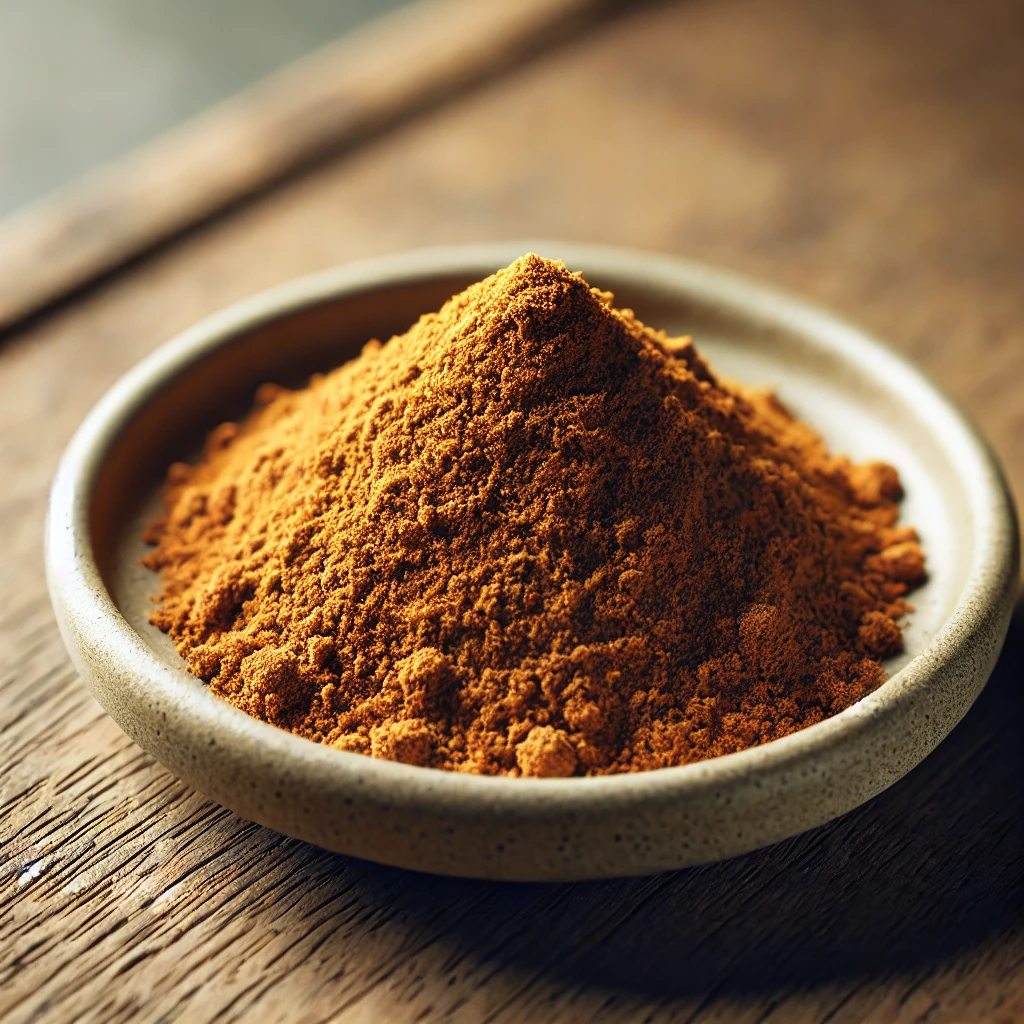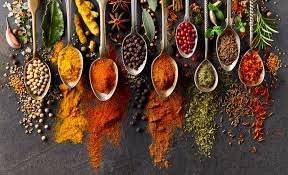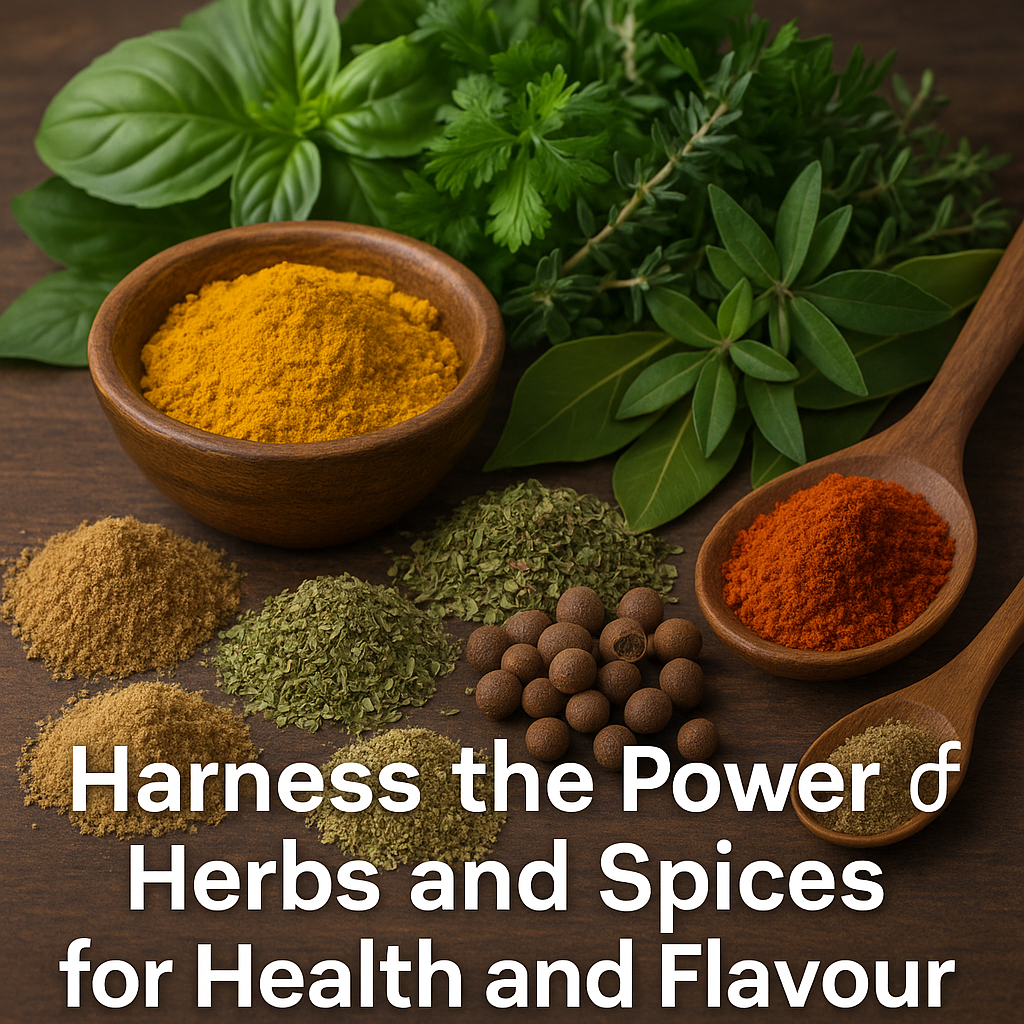How easy homemade spice blends add flavor to our food
Herbs and Spices are considered to be the heart and soul of every dish. Enthusiastic chefs around the world use them to add texture, aroma, color, and flavour to cooking.
Whether you are a home cook or an expert, understanding how to use these natural wonders can completely transform your food. From the subtle aroma of fresh herbs to the bold punch of dried spices, each ingredient brings its own charm. In this detailed guide, we explore how herbs and spices add flavor, color, and depth to your dishes, making them memorable and irresistible.
in this blog you will learn the essential differences between herbs and spices, how to use them correctly, why quality matters and how easy homemade spices add rich flavors to your dishes. Especially when comparing homemade blends to store-bought options. Discover simple yet powerful tips, like when to add herbs during cooking, how to combine flavors without overpowering a dish, and how to store your ingredients to retain maximum freshness.
We also dive into the health benefits of herbs and spices, which go beyond flavor. With anti-inflammatory properties and natural healing abilities, they are excellent substitutes for salt, sugar, and artificial flavor enhancers.
Plus, we have included a comprehensive FAQ section to answer common questions about usage, storage, substitutions, and blending techniques.
Whether you are preparing savory meals, desserts, chutneys, or cocktails, this is your go-to resource for unlocking the full potential of herbs and spices in your kitchen. Packed with time-tested secrets, practical advice, and storage tips, this guide helps you cook smarter, eat healthier, and elevate every meal.
Here is how to use these magical and naturally grown ingredients in the best possible way. They are guaranteed to enhance the taste when used in the right way. Combine them together to produce a rich symphony of flavors or use them separately to relish that distinctive tinge. Before any further ado let us understand their properties and put them to proper use in your kitchen.
A little secret about homemade herbs and spice mixes
Generally, herbs are plants with savory or aromatic properties. Herbs refer to the leafy green or flowering parts of a plant, either fresh or dried. For the culinary purpose, Herbs are used for flavoring and garnishing food. Common kitchen herbs are basil, cilantro, chamomile, oregano, mint, and parsley.
Spices may be available in several forms: fresh, whole dried, or pre-ground dried. However, most spices are dried. A spice is a seed, fruit, root, bark, or other plant substance. For cooking purpose, spices are primarily used for flavoring or coloring food. Common kitchen spices are cinnamon, cloves, nutmeg, coriander, cumin, and allspice etc;
Since ancient times, herbs and spices have been used throughout the world, but now this secret has been re discovered and their usage have been increased tenfold in the modern era.
No doubt, both add flavor to the food and enhance the taste, but they are also beneficial for a healthy diet. Both have anti-inflammatory properties and the ability to heal body cells quickly. Moreover, their flavors are a healthy substitute for unwanted chemicals like salt, fat, and sugar which are dangerous for health. They also act as appetizers.
Often both end up in the same kitchen rack because of their use for seasoning. However, both are different from each other in terms of properties and tastes. Comprehensively, both herbs and spices are part of plants, but herbs can be fresh or dried whereas spices are mostly dried.
There is a famous saying that herbs and spices give an unpleasant medicinal smell to our dishes. In fact if used properly and in correct quantity they produce a tantalizing aroma and add a sensational flavour to our cooking.
Herbs have a subtle flavor and sweet aroma. In contrast, homemade spices have a more robust flavor and sharp aroma. We can add extra herbs, but additional spices will destroy your dish. With spices, less is more. For example, an extra pinch of oregano in White Pasta Sauce will enhance the flavor and aroma, but extra black pepper will make your pasta very spicy.
Herbs and spices are used to enhance flavor in various cuisines and drinks, such as savory dishes, desserts, jams, sauces, chutneys, dips, cocktails, and mocktails.

- When it comes to seasoning, little is okay. Adding too much will destroy the original taste of that dish. For example, an extra spoon of cinnamon will make the cookies unable to eat.
- Don’t spoil the broth by adding two or more potent herbs into the same dish. One strong flavor of herb and the other mild will complement better.
- For optimal flavour dried herbs are put in the beginning, while fresh herbs are added in the end. For example, we add oregano in between cooking while we add parsley in the end.
- Cold dishes need extra time to blend. That is why, we have to add herbs and spices hours before serving. For example, we rub spices on raw meat and leave it to marinate so that the meat can absorb proper flavor. If you blend your own then homemade spices take far less time.
- The more you chop, the more flavor it will generate. We have to chop the fresh leaves finely, as the more the number of surface cuts, the more the food will absorb the flavor of herbs.
- An ancient device for milling by pounding is a good example. A mortar and pestle come in handy when it comes to powdering dry herbs. Always keep it in the kitchen if you are an avid user.
- Double the recipe, half the herbs. When we double any recipe, we will not double the quantity of herbs. We will use 50% more herbs to get the right taste.
- Better dried out than fresh. Dried herbs are more flavorful and suitable than fresh ones.
- In a nutshell just keep in mind that 2 teaspoons of fresh herbs are equivalent to three quarter of dried or a quarter of powdered.
- Proper storage is necessary to retain the natural flavor of homemade spices and herbs.
- Store dried herbs and spices in a cool, dry and dark place (preferably in the cabinets) in air-tight containers.
- Gluten free dried herbs and spices can stay without losing any of their properties.
- It is convenient but not preferable. Storing herbs and spices near the stove can be handy but not a good option as heat, air and light ruin the natural flavor.
- Check for life. Rub the herbs between your fingers; if you cannot smell its aroma, it will be time to purchase fresh supply.
- Fresh herbs like to be treated like a bouquet. We have to remove the stems, vertically place the herbs in the water (preferably glass of water) and the refrigerator.
- To increase its shelf life we can freeze fresh herbs to give them more energy. To do so, we have to wash them and pat dry them. Snip the stems and store the upper part in the freezer bag.
- We can also store fresh herbs in the freezer bag after washing, chopping, and freezing them in ice cube trays to save on extra time later.
Frequently asked questions
What is the difference between homemade herbs and spices and store-bought ones?
Homemade spices and herbs are often fresher, more aromatic, and free from additives like anti-caking agents or preservatives. You can control the quality, drying method, and grinding process. In contrast, store-bought versions may lose potency over time due to mass production, long storage, and exposure to light and air.
What’s the difference between herbs and spices?
Herbs are typically the green, leafy parts of plants—either fresh or dried—used to flavor or garnish food (e.g., basil, mint, parsley).
Spices, on the other hand, come from other parts of the plant like seeds, roots, bark, or fruits, and are mostly used in dried form (e.g., cinnamon, cumin, cloves).
Can I use fresh herbs instead of dried ones in recipes?
Yes, but you’ll need to adjust the quantity. As a general rule:
2 teaspoons of fresh herbs = ¾ teaspoon of dried = ¼ teaspoon of powdered.
Fresh herbs are milder, so you’ll need more of them.
How do herbs and spices enhance the flavor of food?
Herbs and spices add texture, aroma, color, and flavor to food. They can transform a bland dish into something exciting, offering everything from a mild sweetness to intense heat. Plus, they act as healthy alternatives to salt, sugar, and fat.
Can using too many spices ruin a dish?
Absolutely. With spices, less is more. Overusing strong spices like black pepper or cinnamon can overwhelm a dish. It’s best to start with a small amount and adjust gradually to avoid overpowering the flavors.
When should I add herbs during cooking?
Dried herbs are best added early during cooking to release their full flavor.
Fresh herbs should be added toward the end for a fresh and bright taste.
This ensures optimal flavor and aroma in your dish.
Why do cold dishes need herbs and spices added earlier?
Cold dishes don’t heat up to release flavors naturally. That’s why herbs and spices need to be added hours in advance to allow the ingredients to marinate and fully absorb the flavors.
How should I store dried herbs and spices?
Keep them in airtight containers, stored in a cool, dry, and dark place like a cupboard. Avoid placing them near the stove or sunlight, as heat and light can degrade their potency.
How long do dried herbs and spices last?
While they don’t exactly expire, they lose their potency over time. Rub a small amount between your fingers—if there’s no aroma, it’s time to replace them. Most dried herbs are best used within 1–3 years.
How do I store fresh herbs to keep them longer?
Treat them like fresh flowers: trim the stems and place in a glass of water in the fridge.
Alternatively, freeze them by washing, chopping, and storing them in freezer-safe bags or ice cube trays.
Can I mix different herbs and spices together?
Yes, but do so thoughtfully. Combining one strong herb with one mild herb often works best. Avoid mixing too many bold flavors in one dish, as it can become confusing to the palate.
Why use herbs and spices instead of salt or sugar?
Herbs and spices offer natural, healthy flavor without the negative effects of excessive salt, sugar, or fat. Many also have anti-inflammatory and healing properties, making them a smart choice for wellness.
What tools help bring out more flavor from herbs and spices?
A mortar and pestle is a traditional tool that helps release essential oils from dry herbs. For fresh herbs, chopping them finely increases surface area and flavor infusion.
For more quality books go to our home page




Pingback: Why Homemade Spice Blends Are the Safer Choice
Pingback: 7 secrets ingredients for easy homemade spice secrets